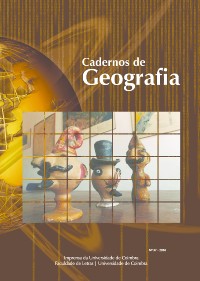Please use this identifier to cite or link to this item:
https://hdl.handle.net/10316.2/44175| Title: | Uma abordagem multiescalar das alterações do uso do solo na Floresta da Tijuca, Rio de Janeiro | Other Titles: | A multiscale approach to land use change in Tijuca Forest, Rio de Janeiro | Authors: | Araújo, Paula Coelho Avelar, André de Sousa |
Keywords: | Urban forest;Changes in land use;Forest degradation;Floresta urbana;Alterações do uso do solo;Degradação florestal | Issue Date: | 2018 | Publisher: | Imprensa da Universidade de Coimbra | Abstract: | As florestas tropicais prestam diversos serviços ambientais, principalmente as urbanas que atuam como
reguladores climáticos e hidrológicos dos sít ios urbanos. A Floresta da Tijuca está localizada na cidade do Rio de
Janeiro (Brasil) e possui um histórico de devastação, o que refletiu em grande perda da sua diversidade e alterações
em todo o sistema geohidroecológico. O objetivo da pesquisa é realizar um resgate espaço-temporal dos
impactos provocados na flore sta, por alterações no uso do solo, e como e stes impactos conduziram às modifica -
ções nos sistemas ambientais. O processo de degradação florestal iniciou-se no século XIX, a partir da derrubada
da vegetação e implantação do cultivo do café nas encostas florestadas. A cidade do Rio de Janeiro então
sofreu déficits no abastecimento de água, a estabilidade original do sistema foi afetada e houve alterações nas
condições microclimáticas, contribuindo para que o governo promovesse o reflorestamento destas áreas. Por ser
uma floresta urbana, a mesma é fonte de grandes pressões externas que alteram as condições iniciais do geossistema,
sendo constatada na pesquisa modificações na temperatura e na qualidade da água, ocorrência de
chuva ácida, deslizamentos de terras, dentre outros. Este quadro de degradação evoluiu significativamente ao
longo das décadas, porém a unidade de conservação, nos últimos anos, tem sido fortemente protegida por medidas
implantadas pelo órgão gestor e apresentando melhorias nos resultados em termos de qualidade ambiental.
Conclui-se que a floresta, apesar de toda a degradação sofrida, continua ainda desempenhando funções fundamentais
como a estabilização do clima, a regulação hidrológica e as raízes da cobertura vegetal contribuem para
a estabilidade das encostas. Nesse sentido, a conservação deste recurso é fundamental para que estes serviços
ambientais continuem sendo realizados e continuem também beneficiando a própria cidade. Tropical forests provide various environmental services, especially urban ones that act as climate and hydrological regulators of urban sites. The Tijuca Forest is located in the city of Rio de Janeiro (Brazil) and has a history of devastation, which reflected in great loss of its diversity and changes throughout the geohydroecological system. The objective of the research is to perform a space-time rescue of the impacts caused in the forest, by changes in the use of the soil, and how these impacts have led to the modifications in the environmental systems. The process of forest degradation began in the 19th century, from the clearing of vegetation and the implantation of coffee cultivation on forested slopes. The city of Rio de Janeiro suffered deficits in water supply then, the original stability of the system was affected and there were changes in the microclimatic conditions, contributing for the government to promote the reforestation of these areas. Because it is an urban forest, it is a source of great external pressures that alter the initial conditions of the geosystem, being verified in the r esearch modifications in the temper ature and water quality, occurrence of acid rain, landslides, among others. This degradation framework has evolved significantly over the decades, but the co nservation unit in recent years has been strongly protected by measures implemented by the managing body and showing improvements in results in terms of environmental quality. It is concluded that the forest, despite all the degradation suffered, still plays a fundamental role as the stabilization of the climate, the hydrological regulation and the roots of the vegetation cover contribute to the stability of the slopes. In this sense, the conservation of this resource is fundamental so that these environmental services continue being realized and continue also benefiting the own city. |
URI: | https://hdl.handle.net/10316.2/44175 | ISSN: | 2183-4016 (PDF) 0871-1623 |
DOI: | 10.14195/0871-1623_37_6 | Rights: | open access |
| Appears in Collections: | Cadernos de Geografia |
Files in This Item:
| File | Description | Size | Format | |
|---|---|---|---|---|
| uma_abordagem_multiescalar_das_alteracoes.pdf | 3.45 MB | Adobe PDF |  |
Items in DSpace are protected by copyright, with all rights reserved, unless otherwise indicated.
